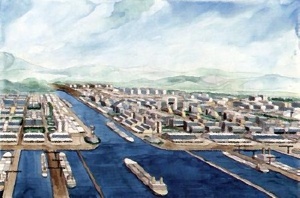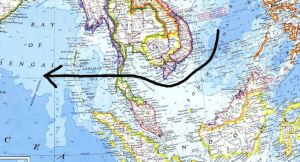The Thai Isthmus Canal: How a New Gateway to East Asia Could Enhance Regional Integration
Europe had its canal at Suez. By avoiding the perilous Cape of Good Hope and cutting over a thousand miles off a steamship trip from London to Bombay, the canal was, in the words of Prime Minister Anthony Eden, Britain’s “great imperial lifeline”. The Americans had theirs in Panama. It pushed America west; through its locks passed the hundreds of thousands of men and women who would go on to realize America’s Manifest Destiny.
A canal across the isthmus of Thailand, if ever built, promises to dramatically shake up existing trade routes, regional relationships and defence policy in East Asia, much as the Suez and Panama canals did for Europe and North America respectively. The enormous technical and financial resources needed to pull off such a feat of engineering would most likely require a wide consortium of investors, from the ASEAN members to China and Japan. Such East Asian involvement would render a Thai Canal the next instalment in a long established tradition of canal building by regional powers with global ambitions. Unlike the Panama and Suez canals however, the Thai canal would disrupt a well established, well regulated and popular shipping route.
Although China has the most to gain from a canal being built (it finds the current status quo wholly unstable and unsustainable), the project would be a boon to the entire East Asian region and ASEAN’s goal of regional integration. Major nations in East Asia are pitted against each other – on the Trans-Pacific Partnership, on what to do with North Korea, on island disputes in the East and South China Seas, and other issues. Joint development of common interests could bring conflicting parties together, in the spirit of peace, security and profit.
The Malacca Strait is strategically vulnerable. The sheer volume of trade and oil that flows through that chokepoint makes an alternative route extremely attractive. Despite this, no single country could, or would want to, fund the canal alone; a wide consortium is required to diversity risks and pool assets.
A new canal is not without risks. The Thai canal, in a bid to compete against the Malacca Strait, could grant vessels anonymous and unregulated passage. It would also be economically damaging to Singapore and Malaysia, whose ports have benefited from the monopoly. Chinese involvement in the financing or construction of the canal could pull Thailand further into its sphere of influence. The United States and Singapore have a long history of partnership in keeping the Malacca Straits open for business, cooperating on issues such as smuggling, piracy and environmental protection. A Thai canal would threaten Singapore’s control and could thus undermine American efforts in the region.
There are ways to control for this: an open and transparent financing instrument is essential, ideally with input from all ASEAN members, granting them shares much as European nations and private citizens were shareholders of the Suez Canal Company. ASEAN would have to be consulted; a need for the canal should be established at the next ASEAN Summit and further explored at the next meeting of transportation ministers. A renewed commitment by Thai authorities to fully incorporate and implement American anti-smuggling and proliferation agreements is also crucial.
Thailand would benefit from thousands of construction jobs and the national pride associated with a project over three hundred years in development. The project would also be a showcase for the ASEAN Way and, by obtaining Singaporean and Malaysian acquiescence, a testament to the consultative yet efficient organization they have built. This would also be an opportunity for South Korea, Japan and the Asian Development Bank to flex their financial muscles in building lasting regional relationships.
The canal should be built, with a diversified group of actors capitalizing an investment vehicle. Ultimately however, the Thai Canal needs to overcome a 300 year legacy of failure.


Recent Comments